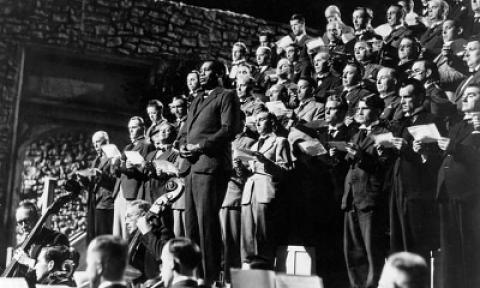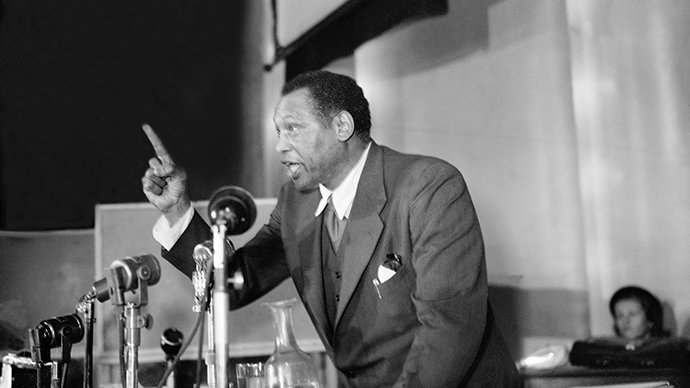Josie Andrews Supplemental
Blog Post #7: Celebrity Politicians
This past week, I have been following the New York
governor’s race since Cuomo supporter and former City Council speaker Christine
Quinn denounced Cynthia Nixon’s (Sex in
the City) decision to run for governor, telling the national press that
Nixon is “an unqualified lesbian” who wants to the governor of New York. Nixon
quipped in response: “When I announced yesterday that I’m running for gov, one
of Cuomo’s top surrogates dismissed me as an ‘unqualified lesbian.’ It’s true
that I never received my certificate from the Department of Lesbian Affairs,
though in my defense there’s a lot of paperwork required.” Putting aside the
stupidity of this comment, this made me think about celebrity politicians (our
current President included), who use their celebrity status to speak as a
surrogate of “popular opinion” on various public causes and groups.

We have seen celebrity politicking in everything from the
Vietnam War to gun control to police brutality to sex trafficking to the recent
“me too” campaign. Every presidential national convention prominently features
celebrities on both sides of the aisle. Celebrities often link their image and
popularity to a certain politician. For example, Oprah Winfrey gave a
relatively unknown Senator—Barack Obama—a platform to meaningfully raise money
and become president. Winfrey is one of the most influential women in the world
and her endorsement of Obama in 2006 before he even announced his candidacy was
a critical component of his election. Not surprisingly, there are a number of
studies addressing what Winfrey’s endorsement meant for Obama—with many
claiming that Winfrey brought at least one million votes to Obama in the
primary and, without Winfrey, Obama would have lost the primary. Jane Fonda, Ashton Kutcher and many other
celebrities often testify before Congress and are known political activists. Others
hold benefit concerts to support causes, like the victims of shootings or AIDS.

Other politicians actually try to capitalize on the marketing techniques of
celebrities to garner public favor—Bill Clinton played his saxophone on the Arsenio Hall Show. Michelle Obama did
carpool karaoke and danced with the iCarly
kids. Hillary Clinton and many other celebrities have appeared on Saturday
Night Live and many talk shows. And, perhaps
most significantly, celebrities like Cynthia Nixon have used their status and
popularity to successfully run for office themselves—Ronald Reagan, Clint
Eastwood, Sonny Bono, Clint Eastwood, and Arnold Schwarzenegger (Terminator) and
even Donald Trump come immediately to mind. And, Oprah Winfrey and Dwayne “the
Rock” Johnson are both being encouraged to throw their hats in the next
presidential race.

Why do we give political legitimacy and credibility
to celebrities who have no governmental experience or often basic governmental
affairs knowledge or skills? My two cents arm chair political analysis is that—despite
their wealth and surreal existence compared to virtually all Americans—celebrities
are often seen as people just like us. This makes them more authentic than
politicians who are riddled with scandal or constantly demonized by the press
and public with scandals of a few coloring public perception and trust in our
elected officials. Celebrities appeal to
our ideals of government being truly “representative” and an outsider. They appear
to be more in touch with popular public opinion--a link between performer and
audience which we have discussed in class is part of the appeal of fandom. And,
they have instant access to millions of people through social media.

Believing that what has been the “norm” is not
working, we embrace those who are not seen as part of the insider “DC beltway”
or “political world” mentality. Of course, the problem with electing celebrity
individuals—as we can see with Donald Trump—is that they are only “symbolic” popular
cultural representatives of Americans. In other words, they are more often
simply consummate performers, who can easily convince us that—despite their
money and star status—they are like those of us who believe they have been
forgotten by traditional government. The result is that we end up with a “reality
TV” star in the White House, conducting affairs for the benefit of the tweeter
world.
While I do believe there are some really bright
celebrities who have been or could be excellent governmental representatives
(thinking of Tom Hanks, in particular), I am not convinced that their celebrity
status necessarily provides a legitimate basis for representation. Instead, I think we need to be more critical
in determining who is and is not appropriately representative of our governmental
goals and needs.







